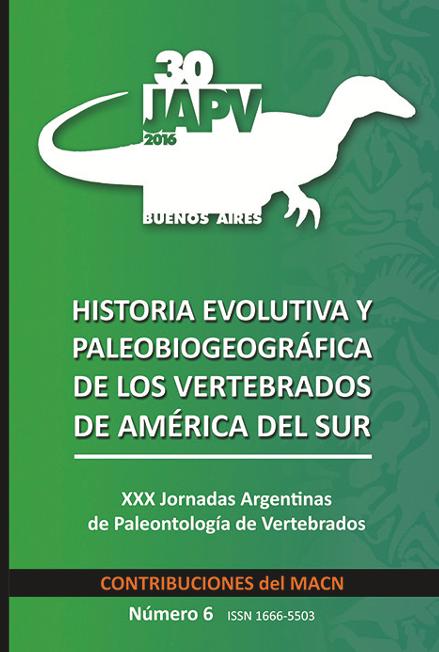Artículo
Los primates platirrinos se distribuyen en la actual Región Neotropical, aunque su historia evolutiva incluye áreas que hoy se comprenden como parte de otra región biogeográfica, tales como los extintos de la Patagonia. Los fósiles más antiguos registrados hasta hoy proceden del Eoceno (probablemente tardío) de Perú, seguido por los restos de Bolivia, con unos 26 Ma. Luego de un vacío de registro, continúan los fósiles patagónicos y chilenos, entre 20 y 15 Ma, seguidos por diversas formas del Mioceno inferior y medio hasta tiempos recientes, en regiones distantes como Panamá, Colombia, Brasil, Perú y las Antillas Mayores. En total se describieron 31 géneros para Sudamérica y el Caribe. Se debaten intensamente los aspectos filogenéticos, siendo la mayor controversia tratar de integrar geográficamente los grupos extintos para comprobar si son parte de una misma radiación adaptativa supragenérica que los reúna con las formas actuales. The platyrrhine primates are a diverse group of mammals from the Neotropical Region, although their evolutionary history includes areas from a different biogeographic region, such as the extinct forms from Patagonia. The oldest fossil records come from the ?late Eocene of Perú, followed by the Bolivian records of 26 Ma. Then, after an apparent absence of records, the Patagonian and Chilean forms appeared between 20 and 15 Ma, and the diverse early to middle Miocene through Recent forms from Panamá, Colombia, Brazil, Perú and the Greater Antilles. A total of 31 genera have been described for South America and the Caribbean. The phylogenetic aspects of their evolution are hotly debated, and the major controversy is to integrate the living and extinct forms as part of the same radiation of higher ranks.
Evolución y paleobiogeografía de los primates platirrinos
Título:
Evolution and paleobiogeography of the platyrrhine primates
Fecha de publicación:
05/2016
Editorial:
Museo Argentino de Ciencias Naturales “Bernardino Rivadavia”
Revista:
Contribuciones el MACN
ISSN:
1666-5503
Idioma:
Español
Tipo de recurso:
Artículo publicado
Clasificación temática:
Resumen
Palabras clave:
Platyrrhini
,
Origen
,
Filogenia
,
Paleobiogeografía
,
Origin
,
Phylogeny
,
Paleobiogeography
Archivos asociados
Licencia
Identificadores
Colecciones
Articulos(CCT-CENPAT)
Articulos de CTRO.CIENTIFICO TECNOL.CONICET - CENPAT
Articulos de CTRO.CIENTIFICO TECNOL.CONICET - CENPAT
Citación
Tejedor, Marcelo Fabian; Novo, Nelson Martin; Evolución y paleobiogeografía de los primates platirrinos; Museo Argentino de Ciencias Naturales “Bernardino Rivadavia”; Contribuciones el MACN; 6; 5-2016; 385-393
Compartir




